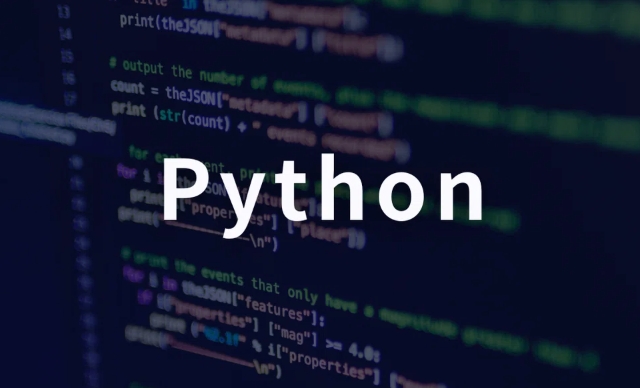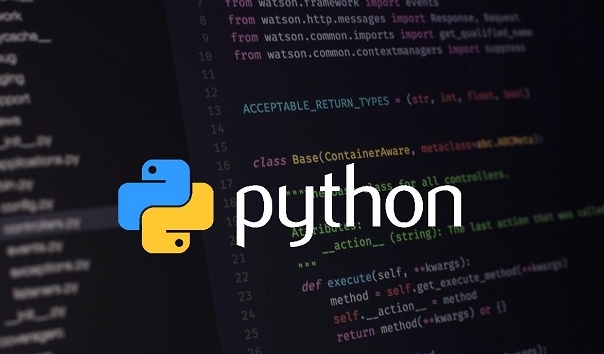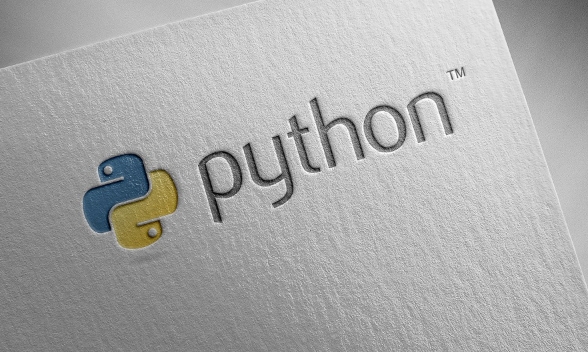 Backend Development
Backend Development
 Python Tutorial
Python Tutorial
 Deep Dive into Python's Object-Oriented Programming Concepts
Deep Dive into Python's Object-Oriented Programming Concepts
Python's object-oriented programming organizes code through classes and objects, emphasizing the combination of data and operations. 1. The class is a template, the object is an instance, and the attributes are initialized with init; 2. Inherit the reusable class function and use super() to call the parent class; 3. Encapsulate the control of access rights through underscore or double underscore to protect the internal state; 4. Polymorphism allows different classes to implement the same-name method and unify the different behaviors of the interface. These features make the program structure clear and easy to maintain.

How to understand Python's object-oriented programming (OOP)? In fact, to put it bluntly, it is to organize the code in the form of "classes" and "objects". Compared with procedural programming, it emphasizes the combination of data and operations, and is suitable for building programs with clear structure and easy to maintain.

Let’s take a look at how OOP is implemented in Python from several common perspectives.

Classes and Objects: The basic unit of OOP
In Python, a class is like a template, and an object is a specific instance created based on this template. For example, you can define a Car class and then create multiple different car objects.
class Car:
def __init__(self, brand, color):
self.brand = brand
self.color = color
my_car = Car("Tesla", "Red") In the above example, __init__ is a constructor that initializes the properties of an object. Each object has its own brand and color attributes. This step may seem simple, but it is the foundation of the entire OOP.

What should be noted is:
- Class names are usually nomenclature by large camels (such as
ElectricCar) - Instance attributes are more common in
__init__ - Class attributes can be written in class bodies and outside methods
Inheritance: Reuse existing class functions
Inheritance allows you to derive new classes from an existing class, so that you can reuse existing code. For example, you can let ElectricCar inherit Car , so that it has all its functions and add new features on this basis.
class ElectricCar(Car):
def __init__(self, brand, color, battery_capacity):
super().__init__(brand, color)
self.battery_capacity = battery_capacity Here super() is used to call the constructor of the parent class to avoid duplicate code. This is a common practice in Python.
The benefits of inheritance are obvious:
- Reduce duplicate code
- Improve code readability
- Easy to expand and maintain
However, you should also be careful not to overuse inheritance, otherwise it will easily lead to too deep class levels and will be difficult to understand.
Encapsulation and access control: Protect internal state
Encapsulation means wrapping data and behavior in a class and hiding implementation details from the outside. Although Python does not have a strict private variable mechanism, it can be simulated by naming conventions:
- Single
_variablemeans protected member - Double underscore
__variablewill trigger name mangling to prevent subclass overwriting
For example:
class BankAccount:
def __init__(self, balance):
self.__balance = balance # private property def deposit(self, amount):
self.__balance = amount
def get_balance(self):
return self.__balance In this way, the balance cannot be changed directly from the external to the outside world, and can only be operated indirectly through methods such as deposit or get_balance . This approach improves security and makes it easier to perform logical verification.
Polymorphism: unified interface, different implementations
Polymorphism refers to the different behaviors of the same method on different objects. For example, both classes implement the draw() method, you don’t have to care about which class it is, just call draw() .
Let's give a simple example:
class Rectangle:
def area(self):
return self.width * self.height
class Circle:
def area(self):
return 3.14 * self.radius ** 2
def print_area(shape):
print(f"Area: {shape.area()}") print_area here can be processed regardless of whether it is a rectangle or a circle. This is the charm of polymorphism - unified interface, flexible expansion.
In general, Python's OOP is not complicated, but to really use it well, you must understand the core concepts of classes, objects, inheritance, encapsulation and polymorphism. Some places look similar, but the difference is reflected when designing large projects.
Basically that's it.
The above is the detailed content of Deep Dive into Python's Object-Oriented Programming Concepts. For more information, please follow other related articles on the PHP Chinese website!

Hot AI Tools

Undress AI Tool
Undress images for free

Undresser.AI Undress
AI-powered app for creating realistic nude photos

AI Clothes Remover
Online AI tool for removing clothes from photos.

Clothoff.io
AI clothes remover

Video Face Swap
Swap faces in any video effortlessly with our completely free AI face swap tool!

Hot Article

Hot Tools

Notepad++7.3.1
Easy-to-use and free code editor

SublimeText3 Chinese version
Chinese version, very easy to use

Zend Studio 13.0.1
Powerful PHP integrated development environment

Dreamweaver CS6
Visual web development tools

SublimeText3 Mac version
God-level code editing software (SublimeText3)
 How to handle API authentication in Python
Jul 13, 2025 am 02:22 AM
How to handle API authentication in Python
Jul 13, 2025 am 02:22 AM
The key to dealing with API authentication is to understand and use the authentication method correctly. 1. APIKey is the simplest authentication method, usually placed in the request header or URL parameters; 2. BasicAuth uses username and password for Base64 encoding transmission, which is suitable for internal systems; 3. OAuth2 needs to obtain the token first through client_id and client_secret, and then bring the BearerToken in the request header; 4. In order to deal with the token expiration, the token management class can be encapsulated and automatically refreshed the token; in short, selecting the appropriate method according to the document and safely storing the key information is the key.
 Explain Python assertions.
Jul 07, 2025 am 12:14 AM
Explain Python assertions.
Jul 07, 2025 am 12:14 AM
Assert is an assertion tool used in Python for debugging, and throws an AssertionError when the condition is not met. Its syntax is assert condition plus optional error information, which is suitable for internal logic verification such as parameter checking, status confirmation, etc., but cannot be used for security or user input checking, and should be used in conjunction with clear prompt information. It is only available for auxiliary debugging in the development stage rather than substituting exception handling.
 What are python iterators?
Jul 08, 2025 am 02:56 AM
What are python iterators?
Jul 08, 2025 am 02:56 AM
InPython,iteratorsareobjectsthatallowloopingthroughcollectionsbyimplementing__iter__()and__next__().1)Iteratorsworkviatheiteratorprotocol,using__iter__()toreturntheiteratorand__next__()toretrievethenextitemuntilStopIterationisraised.2)Aniterable(like
 What are Python type hints?
Jul 07, 2025 am 02:55 AM
What are Python type hints?
Jul 07, 2025 am 02:55 AM
TypehintsinPythonsolvetheproblemofambiguityandpotentialbugsindynamicallytypedcodebyallowingdeveloperstospecifyexpectedtypes.Theyenhancereadability,enableearlybugdetection,andimprovetoolingsupport.Typehintsareaddedusingacolon(:)forvariablesandparamete
 How to iterate over two lists at once Python
Jul 09, 2025 am 01:13 AM
How to iterate over two lists at once Python
Jul 09, 2025 am 01:13 AM
A common method to traverse two lists simultaneously in Python is to use the zip() function, which will pair multiple lists in order and be the shortest; if the list length is inconsistent, you can use itertools.zip_longest() to be the longest and fill in the missing values; combined with enumerate(), you can get the index at the same time. 1.zip() is concise and practical, suitable for paired data iteration; 2.zip_longest() can fill in the default value when dealing with inconsistent lengths; 3.enumerate(zip()) can obtain indexes during traversal, meeting the needs of a variety of complex scenarios.
 Python FastAPI tutorial
Jul 12, 2025 am 02:42 AM
Python FastAPI tutorial
Jul 12, 2025 am 02:42 AM
To create modern and efficient APIs using Python, FastAPI is recommended; it is based on standard Python type prompts and can automatically generate documents, with excellent performance. After installing FastAPI and ASGI server uvicorn, you can write interface code. By defining routes, writing processing functions, and returning data, APIs can be quickly built. FastAPI supports a variety of HTTP methods and provides automatically generated SwaggerUI and ReDoc documentation systems. URL parameters can be captured through path definition, while query parameters can be implemented by setting default values ??for function parameters. The rational use of Pydantic models can help improve development efficiency and accuracy.
 How to test an API with Python
Jul 12, 2025 am 02:47 AM
How to test an API with Python
Jul 12, 2025 am 02:47 AM
To test the API, you need to use Python's Requests library. The steps are to install the library, send requests, verify responses, set timeouts and retry. First, install the library through pipinstallrequests; then use requests.get() or requests.post() and other methods to send GET or POST requests; then check response.status_code and response.json() to ensure that the return result is in compliance with expectations; finally, add timeout parameters to set the timeout time, and combine the retrying library to achieve automatic retry to enhance stability.
 Setting Up and Using Python Virtual Environments
Jul 06, 2025 am 02:56 AM
Setting Up and Using Python Virtual Environments
Jul 06, 2025 am 02:56 AM
A virtual environment can isolate the dependencies of different projects. Created using Python's own venv module, the command is python-mvenvenv; activation method: Windows uses env\Scripts\activate, macOS/Linux uses sourceenv/bin/activate; installation package uses pipinstall, use pipfreeze>requirements.txt to generate requirements files, and use pipinstall-rrequirements.txt to restore the environment; precautions include not submitting to Git, reactivate each time the new terminal is opened, and automatic identification and switching can be used by IDE.





